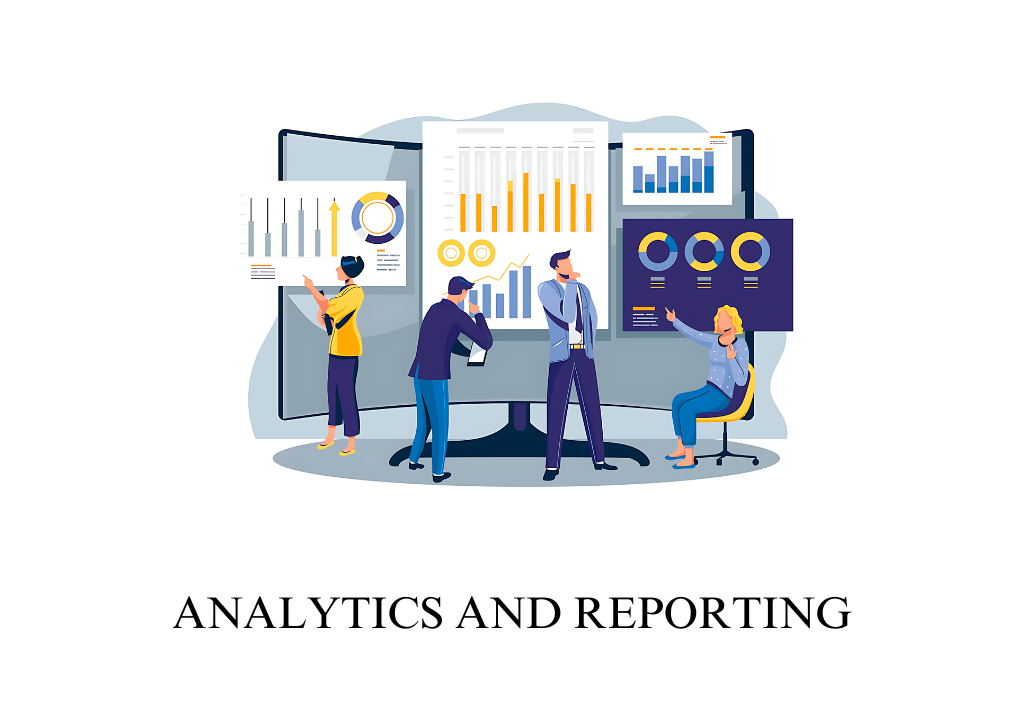Introduction
Meaning
Analytics and reporting functionality in legal practice involves the use of tools and processes that allow legal teams to analyze data and generate reports on various aspects of their work. This functionality provides insights into case progress, legal spending, workload distribution, and other key metrics through visual dashboards and detailed reports. By utilizing features such as analytics dashboards, report generation, and customization options, legal professionals can make data-driven decisions, optimize their workflows, and improve overall efficiency.
Purpose
The purpose of analytics and reporting functionality is to enable legal teams to gain a deeper understanding of their operations by analyzing relevant data and presenting it in a meaningful way. This helps in tracking performance, identifying trends, and making informed decisions to improve legal outcomes. Additionally, it supports compliance with reporting requirements and allows for better communication of key information to stakeholders.
Benefits
- Data-Driven Decision Making: Provides actionable insights based on real-time data, helping legal teams make informed decisions.
- Increased Transparency: Enhances visibility into the performance of legal operations, enabling better tracking and accountability.
- Efficiency Improvements: Identifies areas for process optimization, helping legal teams streamline their workflows.
- Customizable Insights: Allows legal professionals to tailor analytics and reports to meet specific needs, ensuring that they focus on the most relevant data.
- Enhanced Reporting: Facilitates the creation of detailed reports that can be shared with clients, management, or regulatory bodies.
Features
Analytics Dashboard
Meaning:
An analytics dashboard is a visual interface that displays key metrics, data visualizations, and performance indicators related to legal operations. This feature aggregates data from various sources and presents it in an easily digestible format, allowing legal teams to monitor important aspects of their work at a glance.
Purpose:
The purpose of an analytics dashboard is to provide legal teams with a centralized view of critical data, enabling them to quickly assess the status of cases, workloads, legal spending, and other relevant metrics. This helps in making timely decisions and identifying trends or issues that may require attention.
Use Cases:
- Case Monitoring: A law firm uses an analytics dashboard to track the progress of all active cases, visualizing key milestones and identifying any cases that are at risk of delay.
- Performance Tracking: A corporate legal department utilizes an analytics dashboard to monitor the performance of its legal teams, including metrics such as case resolution times and billable hours.
Report Generation
Meaning:
Report generation features allow legal teams to create detailed reports based on the data collected from their analytics tools. These reports can cover various aspects such as case status, legal expenditures, client billing, and compliance metrics, providing a comprehensive overview of legal operations.
Purpose:
The purpose of report generation is to produce structured documents that summarize and analyze key data, which can be used for internal review, client communication, or regulatory compliance. This feature helps legal teams document their findings, track progress over time, and present data in a formal and organized manner.
Use Cases:
- Client Reports: A law firm generates detailed reports for its clients, summarizing the progress of their cases, the work completed, and the associated costs, ensuring transparency and accountability.
- Compliance Reporting: A company’s legal department generates reports to demonstrate compliance with regulatory requirements, documenting key actions taken and metrics achieved.
Dashboard Customization
Meaning:
Dashboard customization allows legal teams to tailor their analytics dashboards to meet specific needs, preferences, and objectives. This feature enables users to choose which data points to display, how they are visualized, and how the overall dashboard is organized, ensuring that the most relevant information is easily accessible.
Purpose:
The purpose of dashboard customization is to provide legal professionals with a personalized and relevant view of their data, helping them focus on the metrics that matter most to their specific role or project. By customizing their dashboards, users can optimize their workflow and ensure that they have quick access to the insights they need.
Use Cases:
- Role-Based Dashboards: A law firm customizes dashboards for different roles, such as attorneys, paralegals, and managers, ensuring that each team member sees the most relevant data for their responsibilities.
- Project-Specific Views: A legal team working on a large, complex case customizes its dashboard to focus on specific aspects of the case, such as deadlines, document review status, and collaboration metrics.
Report Customization
Meaning:
Report customization features enable legal teams to tailor the content and format of their generated reports to suit specific requirements. Users can select which data to include, how it is presented, and the level of detail provided, ensuring that reports meet the unique needs of different audiences, such as clients, management, or regulatory bodies.
Purpose:
The purpose of report customization is to ensure that the generated reports are aligned with the specific goals and preferences of the intended audience. This feature allows legal professionals to create reports that are more relevant, focused, and useful, improving the effectiveness of their communication and documentation efforts.
Use Cases:
- Client-Specific Reports: A law firm customizes its reports to highlight the information most important to a particular client, such as the status of ongoing litigation, recent developments, and costs incurred.
- Management Briefings: A corporate legal department creates customized reports for senior management, focusing on key performance indicators and strategic insights that help guide business decisions.
Conclusion
These features within the analytics and reporting functionality are essential for legal teams seeking to leverage data to improve their operations, make informed decisions, and effectively communicate with stakeholders. By utilizing these tools, legal professionals can gain deeper insights into their work, optimize their processes, and achieve better outcomes in their legal practice.


